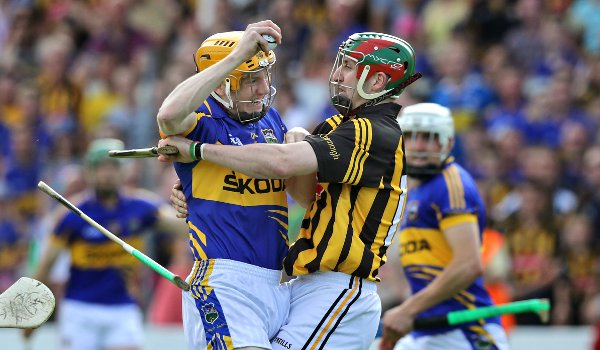STATISTICS sometimes do lie but the stats painted the truest picture of the competitiveness of last year’s hurling league.
Just two points divided the six teams in Division 1A.
Twelve of the 19 fixtures were either draws or one-score victories. The relegation final was decided after extra-time. The final itself was an epic. The hurling was so enthralling that it was a precursor to the high-wire drama to come over the summer.
The campaign though, brought to mind something Ger Loughnane first identified in 1997.
Last spring was the most comparable league in terms of quality and competitiveness to the one 17 years ago, when an eight-team bear-pit produced some of the best league hurling ever played.
Some of those games in 1997 were league-classics, played out in theatres with massive crowds.
Yet by the middle of April, Loughnane realised that sustaining that pace was unrealistic. Clare rowed back and ended up being relegated. They were All-Ireland champions by September.
When his team finished top after Round 5 last April, Tipperary manager Eamon O’Shea spoke about a similar imbalance in the system. “We’re going Sunday after Sunday,” he said. “You don’t have time to do much training. You don’t have time to recover.”
Last year’s league definitely compromised Tipperary. In trying to avoid getting embroiled in a relegation battle, Tipp got sucked in to trying to win the competition.
 Some of Tipperary's players were drained after an exhausting spring campaign
Some of Tipperary's players were drained after an exhausting spring campaignWith a semi-final and final, Tipp used up too much gas during the league. After losing their opening two games, Kilkenny had to increase their performance levels to avoid a relegation struggle.
Some of their more senior players had an arduous and sustained spring campaign and their tank was also drained by the summer.
For a finish, Cork and Clare — who contested the relegation final — reached the All-Ireland final while Dublin and Limerick — who spent the spring cruising in Division 1B — won provincial titles.
Although there have only been two rounds played to date, the similarities are again evident in Division 1A. The games have not been as tightly contested but the table certainly is.
Whoever loses their next game at the weekend might then need two wins from two to avoid a relegation dog-fight.
Galway looked untouchable when torching Dublin in their opening match but their subsequent defeat to Waterford has landed them back in the bear-pit.
“We’re down in Kilkenny in two weeks’ time,” said Galway manager Anthony Cunningham afterwards. “We have Tipp in Salthill the week after and then we’re in Clare. It doesn’t get any easier.
We were hoping that teams that won the last day would kick on and win again. But it’s ‘even Steven’ for us all.”
Trying to balance the equation of competitiveness with sufficient experimentation is one of the major challenges teams face in this league. Kilkenny are clearly already experimenting more than they did last spring.

After Tipp’s opening day win, O’Shea said their only priority was the Munster semi-final against Limerick in June. After losing to Dublin by six points in Round 2, Davy Fitzgerald was similarly realistic.
“We weren’t going to be as competitive today as we were against Kilkenny,” he said. “You’re not going to have a performance every day.”
Every team’s priority is almost to avoid relegation but the heat has also been taken out of that potential prospect with how the league has been restructured this season. Given how competitive Division 1A has become, Division 1B is no longer the wasteland it has often been portrayed.
With the top four in each division contesting quarter-finals, reaching a league final from Division 1B would guarantee almost as many competitive games as some teams in Division 1A.
What’s more, they may be far fresher as a result because they won’t have to keep their foot pressed to the accelerator throughout February and March like some teams in Division 1A may be forced to.
A late spring run would also ideally offset the lack of competitiveness in certain early season games. Division 1B will also allow for more road-testing of certain players than could be risked in Division 1A.
Still, nobody wants to be relegated to Division 1B, while every team with serious ambition wants to play in 1A. It has been 18 years since a team won an All-Ireland coming from the second tier but the current league shows just how open and even hurling now is amongst the top eight.
Last spring and summer showcased as much. And this spring is already confirming it.

